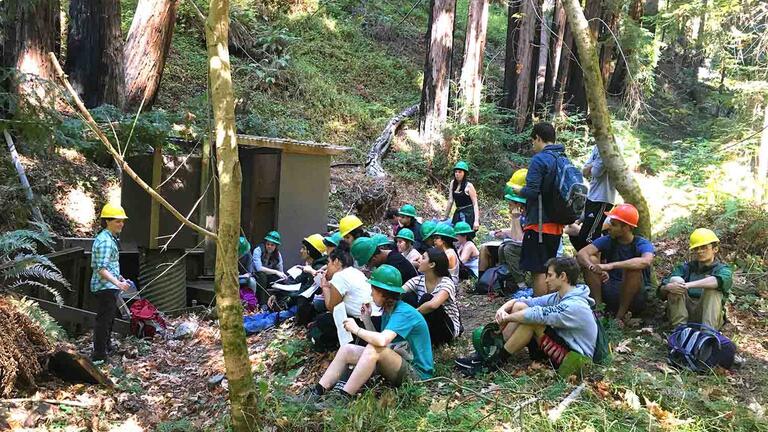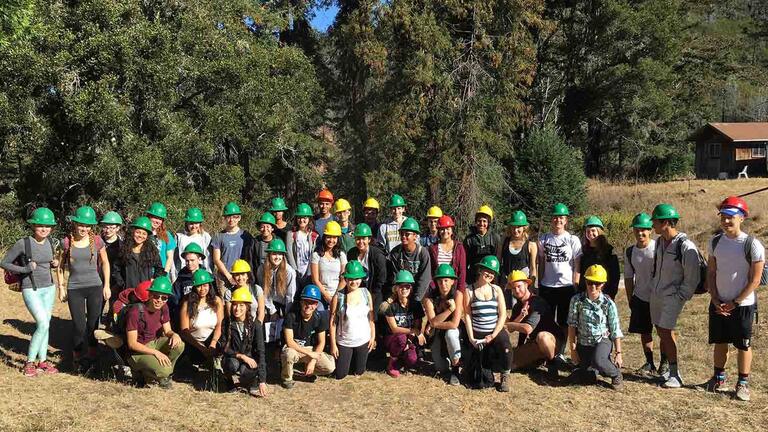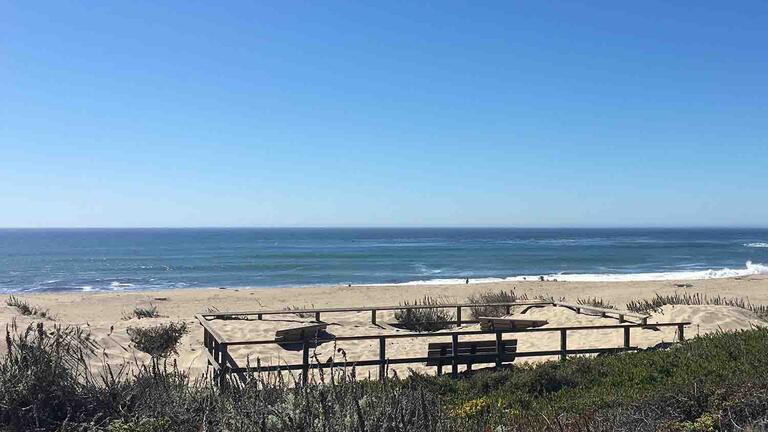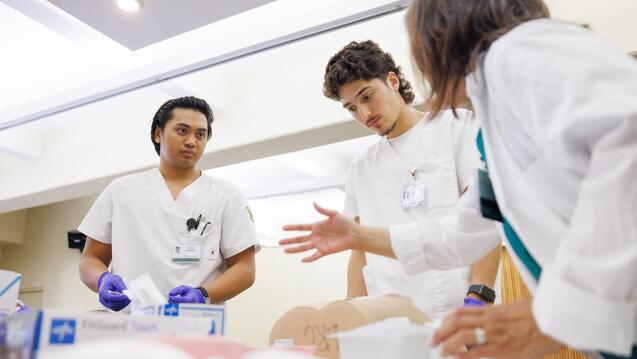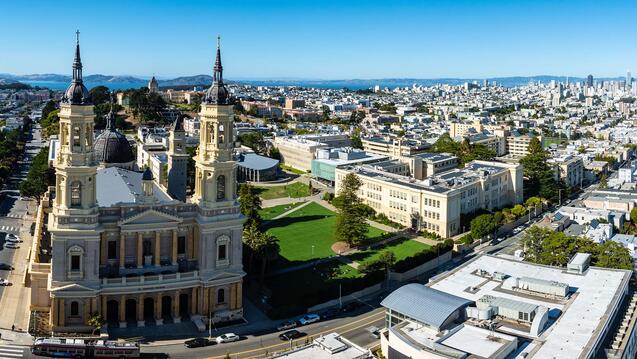Students Bond Beneath Stars On Overnight Field Trip
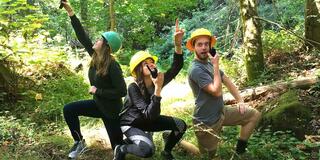
In September, students in Professor Calla Schmidt’s Introduction to Environmental Science class took an overnight field trip to Swanton Pacific Ranch, an educational research facility devoted to resource conservation and sustainable land management techniques.
Comprised of a Redwood and Douglas-fir forest, riverine ecosystems, and expansive coastal grasslands, Swanton practices sustainable active logging, agriculture, and livestock operations. These practices allow it to maintain biological diversity, wildlife habitats, and water quality. And this is precisely why Prof. Schmidt has been taking students to the ranch every year since she started at USF four years ago.
“Places like Swanton Ranch are really important to illustrate that resource use doesn't have to create scorched earth landscapes. We can be good stewards,” she said.
Armed with overnight gear, the students made the scenic 60+ mile bus trip together along the coast and spent the night in yurts. At the ranch, they hiked from the top of Scott’s Creek watershed all the way down to the Pacific Ocean, admiring and learning about Swanton’s diverse plants, landforms, and land use practices — and they had a lot of fun along the way.
The Extended Classroom
For many students in Introduction to Environmental Science, the field trip is a highlight of the course. It’s an opportunity to get out of the classroom, enjoy the great outdoors, and talk through resource management issues while surrounded by the resources themselves.
Katherine Garcia ’19, an Environmental Science major, first participated in the annual Swanton Ranch field trip as a freshman and had the opportunity to attend again this year as Prof. Schmidt’s TA. She said both experiences were rewarding and reinforced what she learned in the classroom. In particular, she gained a better understanding of abiotic (nonliving) and biotic (living) factors that affect redwood forests and watersheds.
“Actually stepping foot into the environment that you have read about, had lectures on, and seen photos of in your textbook, all the different bits and pieces of information truly begin to fall into place and make sense," she said.
Learning in the classroom is wonderful, but being thrown into a new, unpredictable environment, where you feel outside of your comfort zone, is an eye opening experience."
Alyssa Moore ’18, a student assistant in the Environmental Science office, also attended the field trip twice and commented on how valuable it was to step outside the classroom walls — even more so the second time around.
“Accompanying the freshmen on this field trip was an incredible experience because I remember my own class's visit to Swanton very vividly — sleeping in the yurts at Staub House, the beautiful hike along the watershed to the ocean, even the smell of the pine trees and bay laurels. It was like a step back in time,” she said. “The difference was that, after more than two years of environmental science classes, I now know so much more about the concepts and methods and environmental problems. It was so rewarding to see the progress I've made.”
A Chance to Make Friends
The overnight field trip is also, as Prof. Schmidt points out, a good bonding experience for the students, which means a lot for freshman new to campus and the Bay Area. The two-day trip gives students the opportunity to get to know each other better and form friendships with people who share their passion for the environment.
Katherine Garcia said, “On my first trip, I feared that hiking for approximately eight miles with classmates I had only come to meet weeks earlier would lead me to feel isolated. However, I built stronger connections to my classmates that led to lasting friendships.”
Natalie Seko ’20, also an Environmental Science major, said she had an amazing time bonding with her classmates and made a lot of great memories — from preparing dinner against the backdrop of the setting sun to jumping into the Pacific Ocean at the hike’s end.
“A group of us took our sleeping bags outside and stargazed together and bonded while looking for shooting stars. Since we were miles away from city lights, we were able to clearly see the Milky Way,” she said. “I absolutely loved being away from the city and disconnected from technology. It made the whole class look at our environment in its raw form, which is very beautiful when you see it up close in person.”
Students who major in Environmental Science can look forward to many field trips throughout their undergraduate experience, including numerous weekend trips. The Ecology course, which students typically take second semester, includes kayaking on the San Francisco Bay. In summer 2017, Prof. Schmidt will teach an entirely field-based Environmental Science course in the Sierra Nevada.
